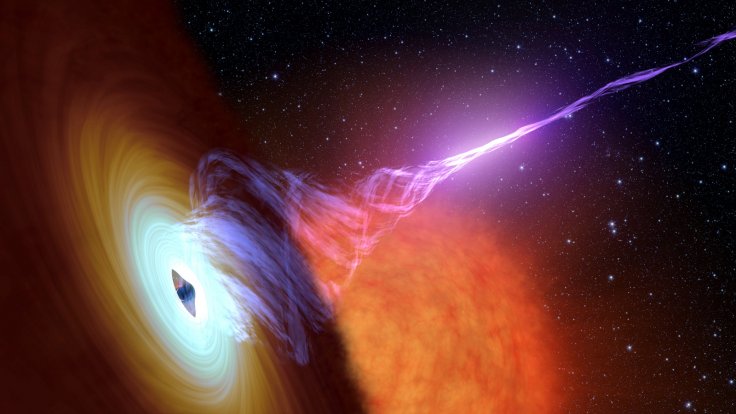
Black holes, one of the most mysterious space entities that are capable of trapping even light has been perplexing space scientists for years. Now, using data from NASA's Chandra X-ray Observatory, astronomers have discovered the evidence of the farthest cloaked black hole and initial analysis suggests that it was formed just 850 million years after the Big Bang.
It should be noted that the universe itself is about 13.8 billion years old, and this newly discovered cloaked black hole might have formed in the early years of cosmos formation.
Experts reveal that, during the early growth of a supermassive black hole, a dense cloud of gas feeds material into the disk of this dark entity, which later cloaks much of the quasar's bright light from the view. Once the black hole consumes materials and become more massive, the dense cloud of the gas gets depleted, and the bright disk gets uncovered.
However, in some cases, quasars can stay out of sight if cold clouds of thick gas get sucked into the disk of material that surrounds the supermassive black hole. In this case, experts successfully discovered the cloaked black hole, as NASA's Chandra X-ray Observatory is using X-ray radiation to unveil objects that are unassailable for the human eyes.
"It's extraordinarily challenging to find quasars in this cloaked phase because so much of their radiation is absorbed and cannot be detected by current instruments. Thanks to Chandra and the ability of X-rays to pierce through the obscuring cloud, we think we've finally succeeded," said Fabio Vito, a researcher at the Pontificia Universidad Católica de Chile, Santiago, Chile, Express.co.uk reports.
A few days back, another study report had suggested that dark matter might have formed just a few fractions of seconds before the Big Bang. As per this study report, the dark matter had formed during an era known as cosmic inflation. The era of cosmic inflation is the time where space was expanding very rapidly, resulting in the production of scalar particles. Until now, modern science has discovered only one scalar particle, and it is nothing other than the Higgs Boson.









